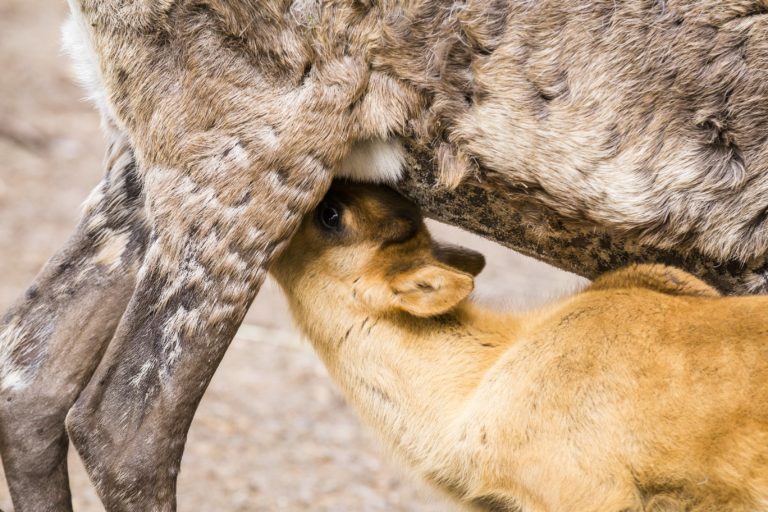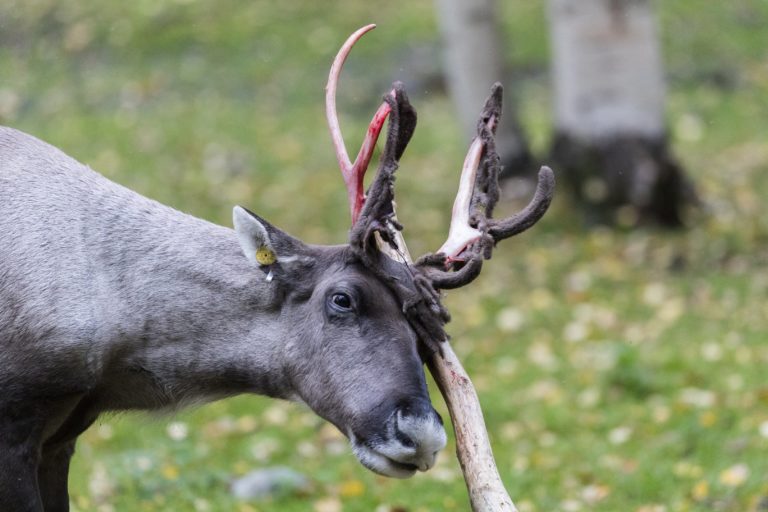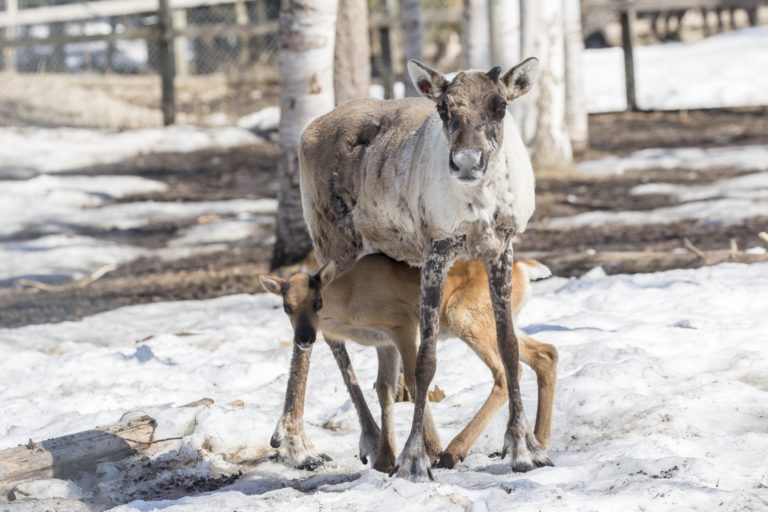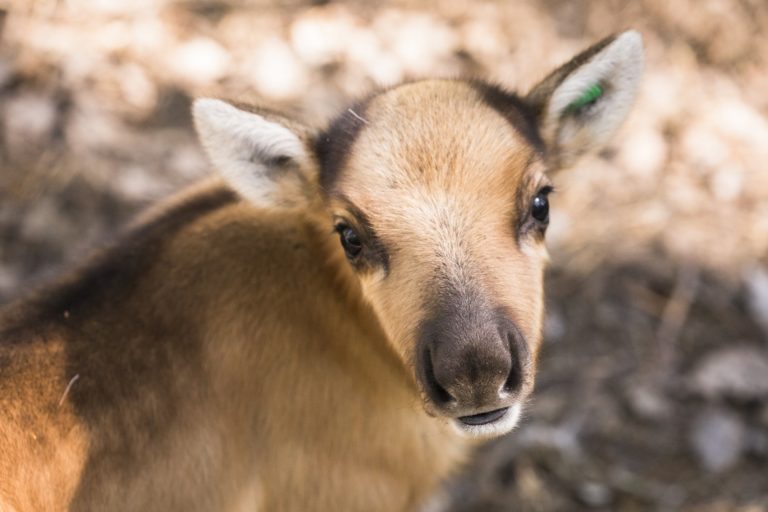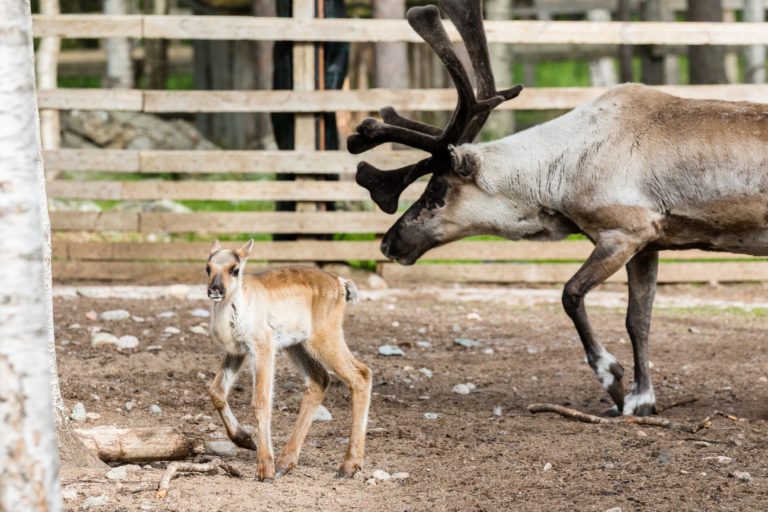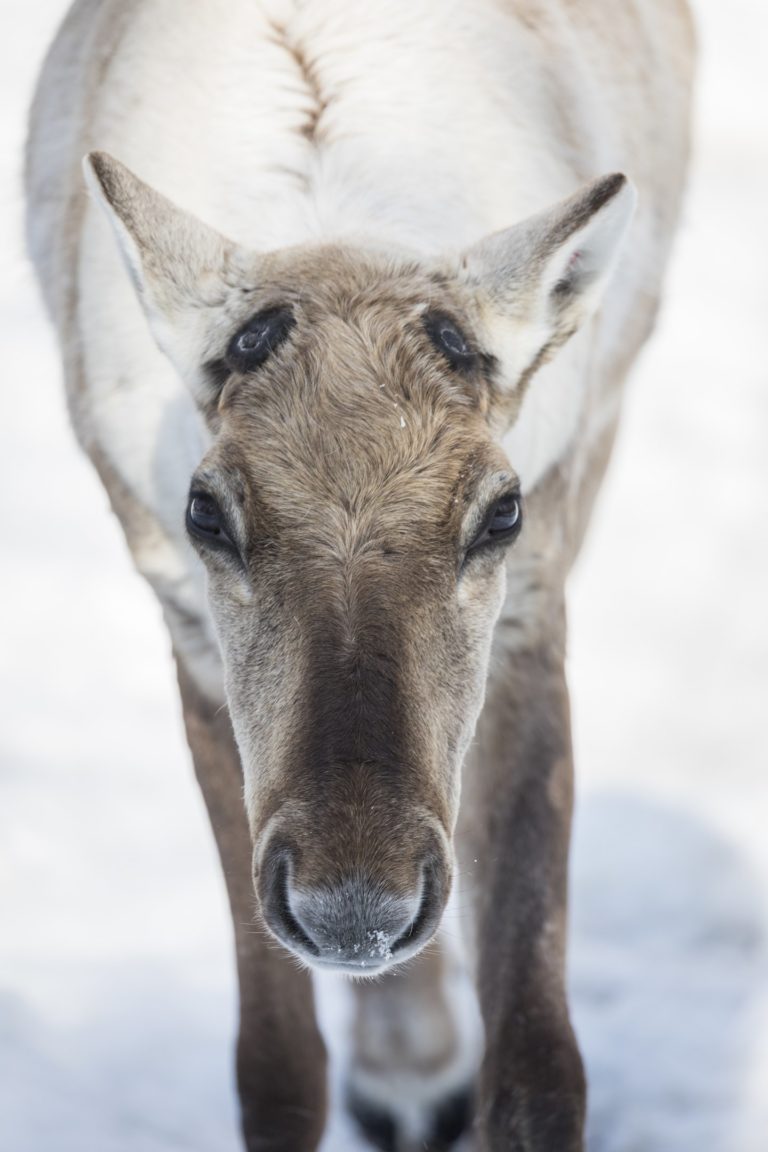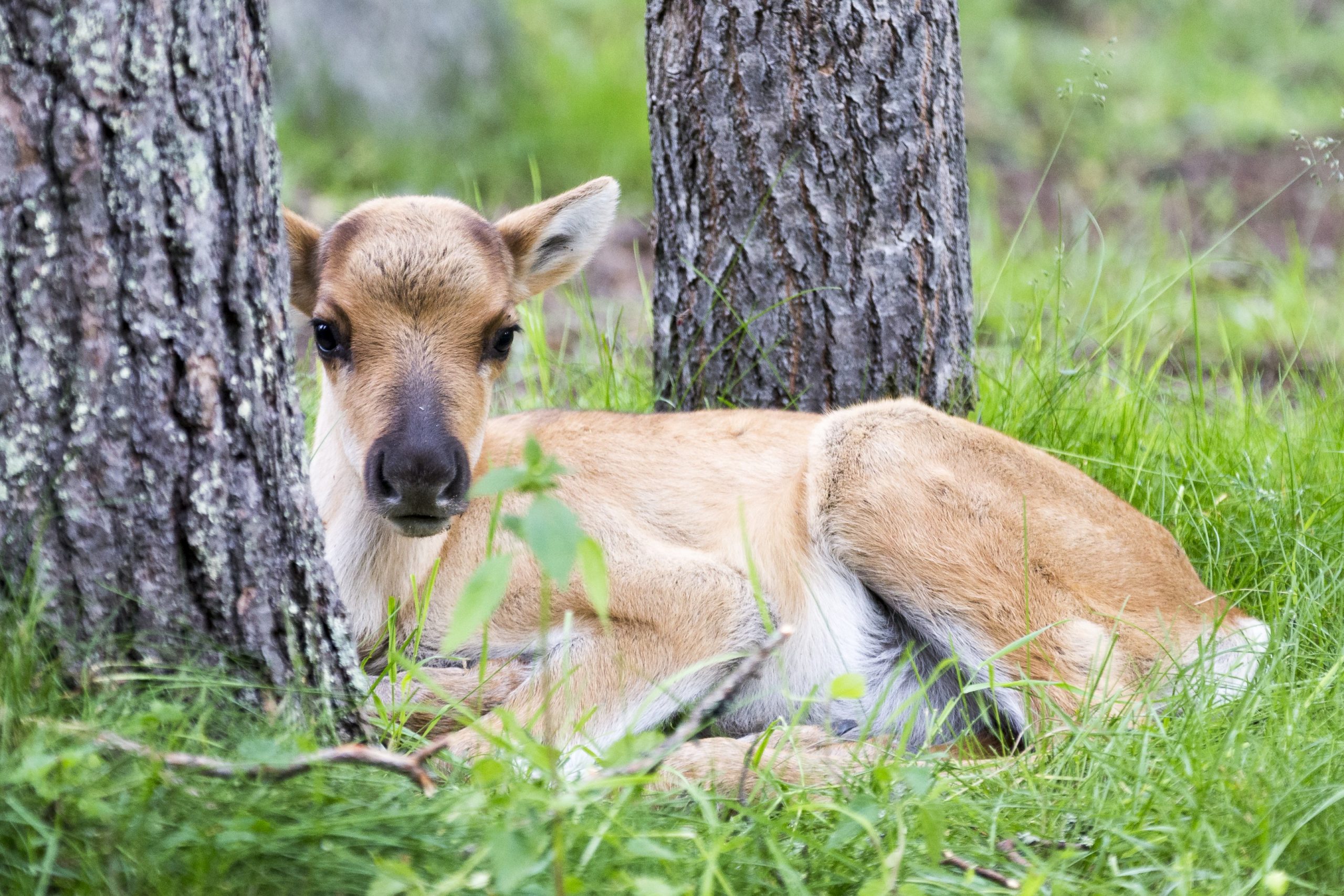
Wild forest reindeer
LIVING HABITS
The wild forest reindeer is closely related to the common reindeer, but is larger in size, and according to its name, the original resident of the northern woods and mountains. The wild forest reindeer, like the reindeer, feeds on lichen, mushrooms, hay, grassy plants, as well as, leaves of trees and bushes, and travels long distances between lush pastures to the more frugal moorlands with lichen.
PROTECTION
The wild forest reindeer is considered a partly protected species in Finland; about 100 hunting permits are issued in order to diminish the damage caused by the wild forest reindeer. In the beginning of the 1900’s, the wild forest reindeer was hunted close to extinction in Finland, but in the 1950’s the species distribution was increased due to the wild forest reindeer entering from across the Russian border into the country. The wild forest reindeer population in Kuhmo in the east was at its height in 2001, the estimated amount being 1700 individuals. After a decline in 2008, the population was 1000 individuals. The current wild forest reindeer population in Kainuu, in the east, is estimated to be 700 individuals (2015). From Kainuu, the wild forest reindeer has been introduced to the regions of Suomenselkä (the drainage divide in western Finland). In addition, some wild forest reindeer raised in wildlife parks have been released out into the regions of Ähtäri. In the region of Suomenselkä and in the central parts of Finland the wild forest reindeer population is over 1250 individuals (2015). The wild forest reindeer at the Ranua Wildlife Park is part of the European StudBook (ESB).
ADAPTING TO WINTER
The wild forest reindeer boasts a well insulating, hollow guard hair fur covering. The subcutaneous fat reserve adds extra warmth. Their wide hooves ease up travel across thickly covered snow grounds in the winter. Thus, the wild forest reindeer is better adapted to moving across snowy lands than the reindeer. With their long legs, the wild forest reindeer travels through the woods of Kainuu, smelling the lichen with its long muzzle.
Wild forest reindeer
Rangifer tarandus fennicus
Class: Mammalia – Mammals
Order: Artiodactyla – Cloven-Hoofed Animals
Family: Cervidae – The Deer Family
Size: Weight: 65-160kg, stands at 100-120cm at the withers, males notably larger than females.
Breeding: Heat: September-October, gestation period: 7 months, offspring 1 at a time. Independent in 1 year, females in good shape reach sexual maturity already in 6 months, males in 1,5 years.
Lifespan: 10-15 years.

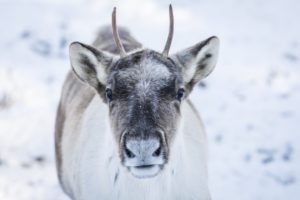
Did you know…
Did you know, that the decline in the wild forest reindeer population is suspected to be due to environmental changes, causing an increase in the wolf population? The splitting of forests and the increase of young coppice helps the moose population to grow in numbers, and where there are moose, there will be wolves; wolves attack wild forest reindeers, and the wild forest reindeer, literally, disappears into the mouth of the wolf.





